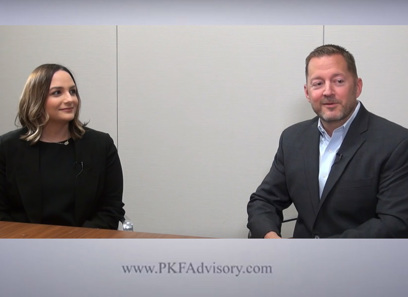Stay prepared with cyber resilience to handle security breaches.
Stay prepared with cyber resilience to handle security breaches.
Blog Article
Future-Proof Your Business: Key Cybersecurity Forecasts You Need to Know
As businesses confront the speeding up pace of digital transformation, understanding the evolving landscape of cybersecurity is critical for lasting strength. Forecasts suggest a considerable uptick in AI-driven cyber threats, along with increased governing examination and the critical change towards No Count on Style. To efficiently navigate these obstacles, organizations must reassess their security approaches and cultivate a society of recognition among employees. Nonetheless, the implications of these modifications expand beyond mere compliance; they could redefine the extremely structure of your operational safety. What steps should business require to not just adjust yet grow in this new setting?
Surge of AI-Driven Cyber Risks

One of one of the most concerning growths is the usage of AI in developing deepfakes and phishing plans that are extremely convincing. Cybercriminals can produce sound and video clip content, posing execs or relied on people, to adjust victims into revealing delicate details or accrediting illegal purchases. In addition, AI-driven malware can adapt in real-time to avert detection by traditional security actions.
Organizations should acknowledge the immediate requirement to bolster their cybersecurity structures to fight these evolving risks. This consists of investing in innovative risk detection systems, promoting a culture of cybersecurity understanding, and executing robust occurrence reaction strategies. As the landscape of cyber threats transforms, positive steps end up being important for protecting sensitive data and preserving business honesty in a significantly electronic world.
Boosted Concentrate On Information Privacy
Just how can companies efficiently navigate the growing focus on information personal privacy in today's electronic landscape? As regulative structures advance and customer expectations increase, services have to focus on durable data personal privacy approaches. This entails embracing extensive data governance policies that ensure the ethical handling of individual details. Organizations must carry out regular audits to assess conformity with regulations such as GDPR and CCPA, determining prospective vulnerabilities that can bring about information violations.
Spending in worker training is crucial, as staff understanding straight affects information defense. Additionally, leveraging innovation to enhance data safety and security is essential.
Collaboration with legal and IT groups is essential to line up data personal privacy campaigns with service purposes. Organizations needs to additionally engage with stakeholders, including customers, to interact their dedication to information privacy transparently. By proactively resolving data personal privacy issues, services can develop trust fund and boost their online reputation, eventually contributing to long-term success in a progressively inspected digital atmosphere.
The Shift to Zero Trust Architecture
In response to the developing danger landscape, organizations are progressively embracing Absolutely no Count on my sources Architecture (ZTA) as a basic cybersecurity technique. This strategy is asserted on the concept of "never depend on, always confirm," which mandates continual confirmation of user identities, gadgets, and information, no matter their place within or outside the network border.
Transitioning to ZTA involves implementing identification and access administration (IAM) services, micro-segmentation, and least-privilege access controls. By granularly managing accessibility to sources, organizations can alleviate the risk of expert risks and decrease the effect of exterior breaches. In addition, ZTA incorporates durable tracking and analytics abilities, enabling organizations to discover and react to abnormalities in real-time.

The change to ZTA is additionally fueled by the increasing fostering of cloud services and remote work, which have actually broadened the attack surface area (cybersecurity and privacy advisory). Typical perimeter-based security versions are inadequate in this new landscape, making ZTA a more resilient and flexible framework
As cyber hazards remain to grow in refinement, the adoption of Zero Count on principles will be critical for organizations looking for to shield their possessions and keep regulatory conformity while ensuring organization continuity in an unsure environment.
Governing Adjustments on the Horizon

Future policies are expected to resolve a series of concerns, including information personal privacy, violation alert, and event response protocols. The General Information Protection Regulation (GDPR) in Europe has actually established a criterion, and similar frameworks are emerging in various other areas, such as the United States with the recommended government privacy regulations. These guidelines frequently enforce strict fines for non-compliance, highlighting the requirement for companies to prioritize their cybersecurity procedures.
In addition, markets such as finance, healthcare, and vital infrastructure are most likely to face a lot more rigid requirements, reflecting the delicate nature of the data they handle. Conformity will certainly not just be a legal responsibility yet a crucial component of structure count on with consumers and stakeholders. Organizations has to stay ahead of these changes, incorporating governing website here needs into their cybersecurity techniques to ensure durability and secure their properties effectively.
Relevance of Cybersecurity Training
Why is cybersecurity additional hints training a vital part of an organization's protection technique? In a period where cyber risks are progressively innovative, organizations must recognize that their workers are usually the first line of defense. Effective cybersecurity training outfits staff with the understanding to determine prospective risks, such as phishing strikes, malware, and social engineering strategies.
By promoting a society of security recognition, organizations can dramatically decrease the danger of human error, which is a leading reason for information breaches. Routine training sessions make sure that workers remain informed about the most recent risks and finest methods, therefore boosting their capability to respond properly to events.
Additionally, cybersecurity training advertises conformity with governing demands, lowering the threat of legal consequences and monetary charges. It also encourages employees to take ownership of their duty in the organization's security structure, resulting in a proactive instead than responsive technique to cybersecurity.
Final Thought
In conclusion, the evolving landscape of cybersecurity needs positive measures to resolve arising dangers. The rise of AI-driven assaults, coupled with enhanced data privacy worries and the change to No Count on Architecture, demands an extensive approach to security.
Report this page